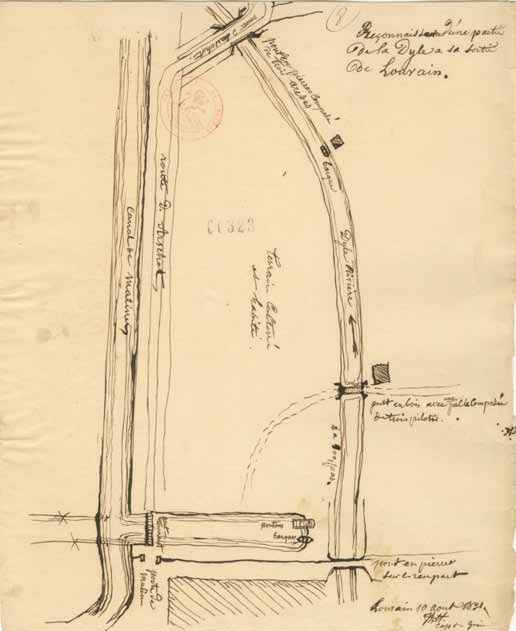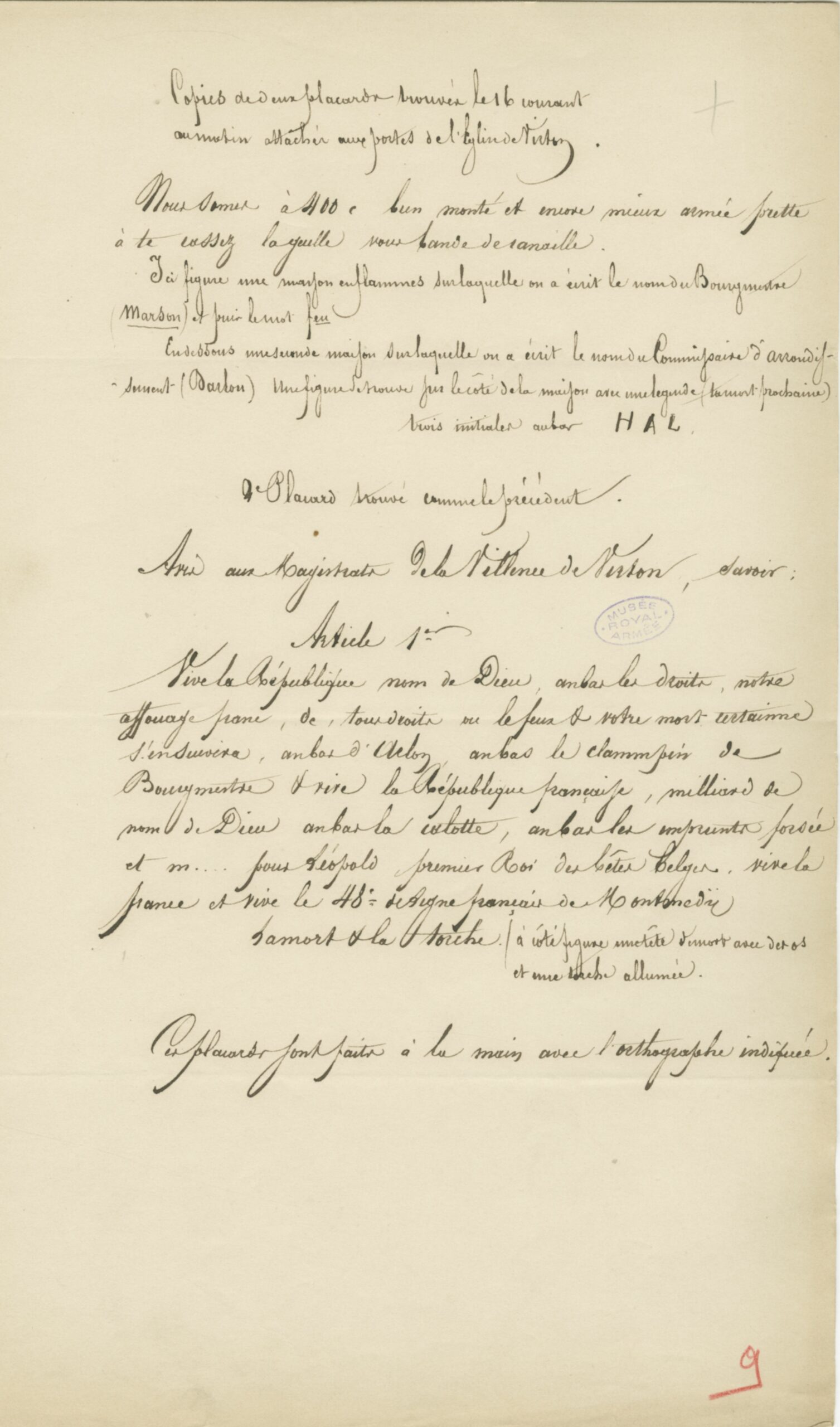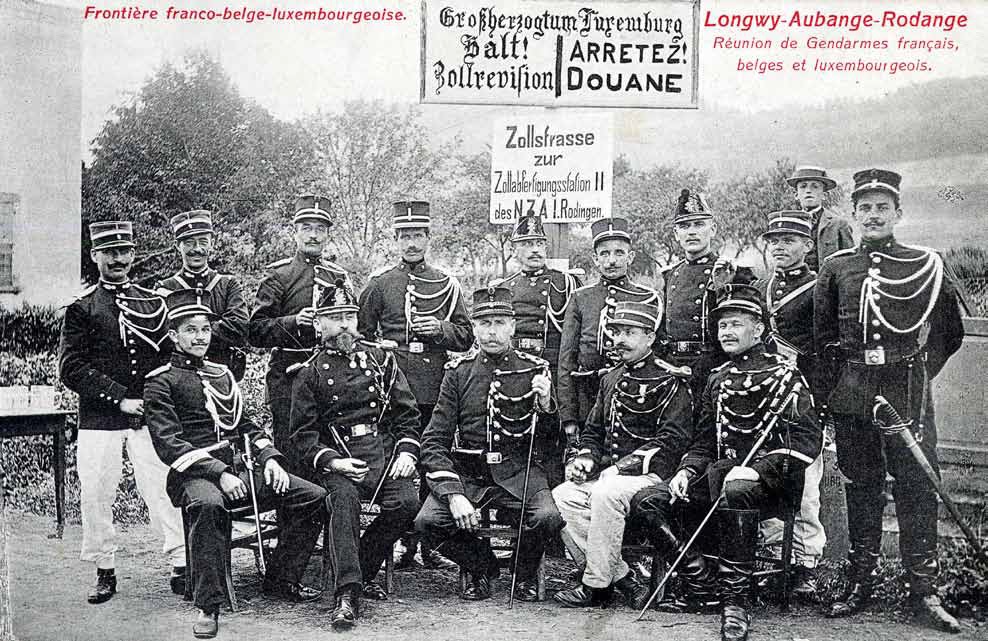| In 1881 worden, binnen het Ministerie van Oorlog, twee bureaus opgericht, belast met het verzamelen van inlichtingen: | In 1881 two services were created within the Department of War: | Vers 1881, faute d’Etat-major général, les tâches relatives à la collecte de renseignements sont centralisées au sein du ministère de la Guerre et forment les services suivants: |
- 1ste Directie “Operaties-Instructies” – 2de Onderdirectie “Instructies” – 6de Bureau “Inlichtingen over buitenlandse legers” (le Reseignement sur les Armées étrangères);
- 1ste Directie ‘”Operaties-Instucties” – 2de Onderdirectie”Instructies” – 5de Bureau “Studies van militaire geschiedenis en aardrijkskunde” (Travaux d’histoire et de géographie militaires).
| - 1st Direction “Operations-Instructions” – 2nd Sub-direction “Instructions” – 6th Office “Intelligence on foreign armies”;
- 1st Direction “Operations-Instructions” – 2nd Sub-direction “Instructions” – 5th Office “Studies of military history and geography” (Travaux d’histoire et de géographie militaires).
| - 1ère Direction “Opérations-Instructions” – 2e Sous-Direction “Instructions” – 6e Bureau “Renseignement sur les armées étrangères”;
- 1ère Direction “Opérations-Instructions” – 2e Sous-Direction “Instructions” – 5e Bureau “Travaux d’histoire et de géographie militaires”.
|
| In 1886 wil men bij Ministeriëel Besluit het “Corps d’Etat-Major”, waarvan het hoofd rechtstreeks afhangt van het Ministerie van Oorlog, een afdeling “inlichting” oprichten (3de sectie). Dit besluit wordt echter niet goedgekeurd door Koning Leopold II. | In 1886, the army wanted to create, by Ministerial Decree, an “Intelligence Department (3rd Section) within the General Staff, whose head was under the direct authority of the Department of War. However, King Leopold II did not agree. | En 1886, on souhaite créer par Arrêté Ministériel un département “Renseignement” (3e section) au sein de l’Etat-major général, dont le chef dépend directement du ministère de la Guerre. Mais le Roi Léopold II refuse de donner son aval. |
| Bij Koninklijk Besluit van 26 juni 1910 wordt een Generale Staf van het Leger opgericht. Het nieuwe orgaan omvat vier bureau’s, waarvan het 2de bureau belast is met Inlichtingen. | The Royal Decree of 26th June 1910 established the General Staff of the Army. The newly created body consisted of four offices, including the 2nd Office, which was responsible for Intelligence. | L’Arrêté Royal du 26 juin 1910 donne naissance à l’État-major de l’armée. Ce nouvel organe comprend quatre bureaux, dont le 2e Bureau est chargé de la partie Renseignement. |
| Begin 1911 wordt door het 2de Bureau ‘Inlichtingen’ een dienst opgericht die de grenzen in het oog moet houden (Service de surveillance et de renseignements aux frontières) en die is samengesteld uit 300 posten die worden bemand met lokale rijkswachters, douaniers en boswachters. | In the beginning of 1911, the 2nd Office “Intelligence” established a service in charge of monitoring the borders (Service de surveillance et de renseignements aux frontières), where 300 local gendarmes, custom officers and forest rangers were employed. | Début 1911, le 2e Bureau « Renseignement » active le service chargé de surveiller les frontières (Service de surveillance et de renseignements aux frontières) et qui se compose de 300 postes pourvus par des gendarmes, des douaniers et des gardes forestiers locaux. |


